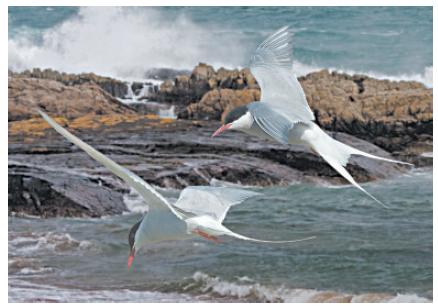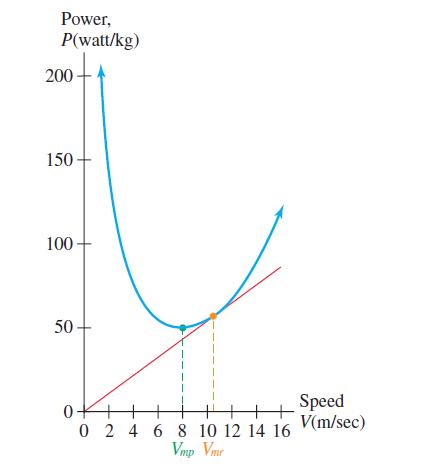Many birds, such as cockatiels or the Arctic terns shown below, have flight muscles whose expenditure of
Question:
Many birds, such as cockatiels or the Arctic terns shown below, have flight muscles whose expenditure of power varies with the flight speed in a manner similar to the graph shown on the next page. The horizontal axis of the graph shows flight speed in meters per second, and the vertical axis shows power in watts per kilogram.
(a) The speed Vmp minimizes energy costs per unit of time. What is the slope of the line tangent to the curve at the point corresponding to Vmp? What is the physical significance of the slope at that point?
(b) The speed Vmr minimizes the energy costs per unit of distance covered. Estimate the slope of the curve at the point corresponding to Vmr. Give the significance of the slope at that point.
(c) By looking at the shape of the curve, describe how the power level decreases and increases for various speeds.
(d) Notice that the slope of the lines found in parts (a) and (b) represents the power divided by speed. Power is measured in energy per unit time per unit weight of the bird, and speed is distance per unit time, so the slope represents energy per unit distance per unit weight of the bird. If a line is drawn from the origin to a point on the graph, at which point is the slope of the line (representing energy per unit distance per unit weight of the bird) smallest? How does this compare with your answers to parts (a) and (b)?
Step by Step Answer:






